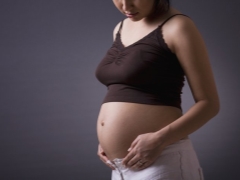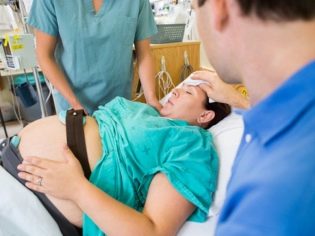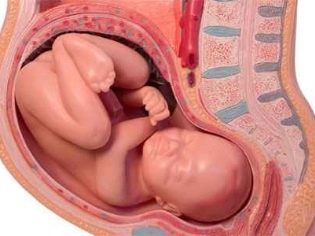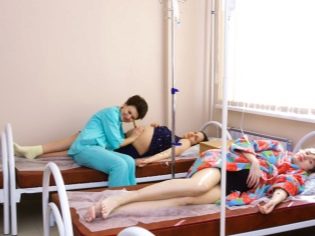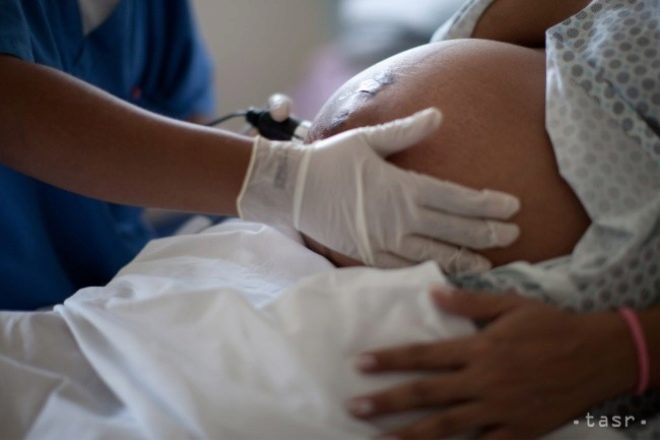Suturing the cervix during pregnancy
Sometimes the long-awaited pregnancy is complicated by the threat not to inform the baby before the due date. Various pathologies of the cervix uteri can cause Istvicno-cervical insufficiency. In some cases, the expectant mother is recommended stitching on the cervix. About why this is done and how this manipulation takes place, we will describe in this material.
What it is?
Suturing the cervix is a forced necessity, which gives a real chance to preserve and prolong the pregnancy if the cervix does not cope with its direct responsibilities for some reason. After conception took place, the cervix is tightly closed. The cervical canal closes and fills with mucus. The task before this part of the reproductive female organ is big and important - keep the growing fetus in the uterus, do not give it ahead of time to get out of it.
In addition to retention, the cervix with a mucous cap prevents the bacteria, viruses, and other unpleasant uninvited “guests” from entering the uterus from the vagina, which can cause intrauterine infection of the baby. It's dangerous because infections transmitted in the embryonic and later periods, usually result in malformations and severe pathologies congenital character, fetal death crumbs.
If the cervix does not adequately protect a growing baby, the likelihood of miscarriage and premature birth increases. If the crumb by this time is not yet able to survive on its own in this world, then such clans will end in tragedy. In order to strengthen the weak neck, doctors also recommend stitching it in certain situations so that the mechanical barrier in the form of stitches does not allow it to open early.
Indications
Strictly indications and unambiguous recommendations of the attending physician must necessarily be attached to this kind of surgical intervention during childbirth. These factors include:
- high risk of miscarriage or premature birth due to the presence of similar cases in history;
- habitual miscarriage in the 1 and 2 trimesters of pregnancy;
- miscarriage in the third trimester;
- earlier shortening and opening of the neck, expansion of the internal or external pharynx;
- doubtful scars remaining on the “memory” of previous genera in which the neck ruptures occurred;
- any destructive changes in the neck in the process of carrying a child that are prone to further development.
To decide that there is a need for at least as suturing, on the basis of a single examination in a gynecological chair, the doctor cannot. He needs comprehensive information about the state of the lower segment of the uterus, which is the cervix. For this is assigned complete biometric examinationwhich includes colposcopy and ultrasound diagnostics, as well as laboratory smear tests.
Only after all the risk factors have been identified, the length and width of the cervix is measured, the state of the cervical canal inside it, as well as the patient's personal history, is assessed, the decision to stitch the cervix can be made.
Contraindications
Stitching of this organ during pregnancy is possible only if, apart from a weak neck, no other global problems have been identified in this pregnancy. If you find some associated pathologies from the operation will have to be abandoned. Contraindications include:
- diseases of the heart and blood vessels, kidneys, which were exacerbated by the expectant mother due to pregnancy, the risk of a woman’s death in the case of mechanical prolongation of pregnancy;
- bleeding, increasing in strength and character, as well as recurrent bleeding when threatened;
- gross malformations of the baby;
- hypertonus of the uterine muscles, which can not be reduced with the help of medical conservative treatment;
- chronic inflammation of the reproductive organs of women, the presence of genital infections, STDs;
- late detection of cervical pathologies - after 22 weeks of gestation (the best time for a successful intervention is the period from 14 to 21 weeks).
How is the surgery going?
The term on which the operation is performed is of great importance. From 14 to 21 weeks, the child is not so large as to strongly stretch the walls of the uterus and muscles of the cervix. At later stages, suturing is not recommended due to the fact that strongly stretched tissues may not withstand and seams will occur and then rupture.
The operation, which in medical language is called "Cervical cerclage", spend only in the hospital. It is not considered painful and painful, as epidural or intravenous anesthesia is administered to the woman.
You should not be afraid of it, because experienced anesthesiologists will calculate the dosage of drugs solely taking into account the gestational age, physique, weight and state of health of the future mother herself and the characteristics of the development of her baby. The dose will be safe for the mother and fetus.
The duration of the entire manipulation does not exceed a quarter of an hour. As the cervix is in, the doctor will suture either the outer or inner neck of the cervix. The outer one will not touch if there is erosion, dysplasia, pseudo-erosion on the neck. The technique is very simple - surgeons suture the edges of the external part of the neck with strong surgical threads.
This method requires careful preparation. If there is an infection in the uterus, the consequences will be more than deplorable. Stitching will create an enclosed space inside the reproductive female organ, in which any microbe can quickly begin to multiply. Previously, a woman is being treated with antibiotics, a thorough debridement of the vagina is done. Not always, though, it helps.
Closed space will not be if the doctor decides to sew up the inner os of the cervix. In this case, experts leave a small drainage hole. The seams themselves are applied in different ways, each surgeon has his own favorite, and it also depends a lot on the anatomical features of this patient.
The Cerclage itself can be held. laparoscopic method. It has many advantages - speed, a rather easy postoperative period, low blood loss, less risk of developing complications.
Laparoscopic cerclage is indicated for women with congenital shortening of the cervix and those who have suffered an unsuccessful vaginal suturing procedure.
Possible problems and complications
As with any surgical procedure, cerclage can also have its complications. The most dangerous are the accession of infection, the development of the inflammatory process and increased tone of the uterine muscles. Inflammation can develop due to an internal infection that could not be “defeated” in the preoperative period. Sometimes a woman has an individual allergic reaction to the suture material used by doctors.
Possible problems can speak prolonged discharge after surgery, the appearance of burning, weak pain syndrome. Moreover, inflammation can manifest itself not only immediately after surgery, but also a few weeks after suturing.That is why it is important to visit the doctor more often and track any changes.
Hypertonus is also a reaction of the uterus to surgery and extraneous to its structures suture material. Some heaviness in the abdomen, small pulling sensations may be quite normal during the first time after the operation, but later they should disappear. If this does not happen, you should inform your doctor.
Infrequently, but it also happens that a woman’s body categorically refuses to accept a foreign body, such as surgical sutures, a violent immune process of rejection begins, which can be accompanied by high fever, atypical secretions, and pain.
In the later periods, the cerclage may have another unpleasant consequence - the wired cervix may suffer greatly if the birth has already begun and the stitches have not yet been removed. Therefore, it is important not to ask the doctor “to sit at home for another week”, but to go to the hospital in advance.
Recommendations for the postoperative period
After the intervention, the woman needs to be under the round-the-clock supervision of doctors in the hospital for a few more days. She is prescribed antispasmodic drugs to reduce the muscle tone of the uterus, as well as strict bed rest. Vaginal reorganization is performed daily to avoid the addition of infection. After that, the pregnant woman can be sent home. The discharge after the intervention lasts about 3-5 days.
The stitches on the neck will require the expectant mother to reconsider their lifestyle to the very birth. Physical exercises, long stay in a vertical position, long walking are contraindicated. In no case can not lift weights. You should also refrain from sexual life, so as not to provoke uterine hypertonia, which can lead to the eruption of sutures.
Up to the birth, the woman will have to keep an eye on her chair - constipation is extremely undesirable, since it is forbidden to push. Therefore, you have to go on a diet, enter into the diet more fresh vegetables and fruits, juices, limit salt, abundance of protein foods, as well as pastries and baking.
Go to the doctor for an appointment will have more often than women usually do in an “interesting position”. The doctor will monitor the state of the stitches, take smears on the vaginal microflora, and, as necessary, prescribe unscheduled ultrasound examinations, the purpose of which is to measure the parameters of the cervix and evaluate its internal structures.
In the hospital, a woman with stitches on the uterus will have to go at 36-37 week. Approximately on this term seams remove. Childbirth can begin after this at any time, even on the same day.
It is not painful to remove the sutures, there is no need to use anesthesia or other methods of anesthesia.
Forecasts and consequences
The percentage of gestation after a cerclage is quite high - more than 80%. Projections depend on the degree of cervical insufficiency and the reasons for which the woman was shown surgery. If after surgery she will follow all the recommendations of the doctor, then chances of bringing a child up to 36-37 weeks increase significantly.
Reviews
In general, women tolerate such an intervention well. The feedback from those who have gone through cervical closure is positive - the long-awaited babies were able to be conveyed to the intended time. Among the minuses, women point to a large number of prohibitions that are imposed on everyday life after such an operation. Almost all patients note that for a long time, the uterus increased its tone, which caused a lot of psychological and physical inconvenience and unrest.
Not all of the pregnant and young mummies, who left reviews of cervical cerclage, agreed to do the operation in the direction of a state hospital. Some consciously choose private and paid medicine. Many clinics in Russia conduct such operations.
The cost of them - in the range of 50 thousand rubles, not counting the preliminary analyzes, but they require quite a lot.
For those who are thinking about stitching when expanding the internal or external cervical cervix in a private clinic, experienced mothers advise choosing an institution in which good specialists work, because in many respects the outcome of the operation depends on the qualifications of the doctor. You should not make a hasty choice, should carefully read the reviews about a particular clinic.
